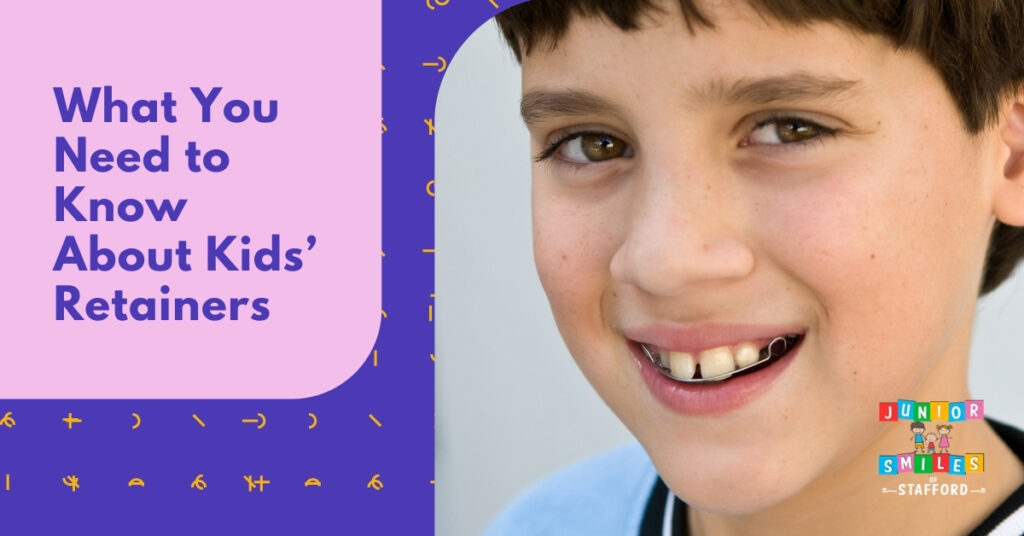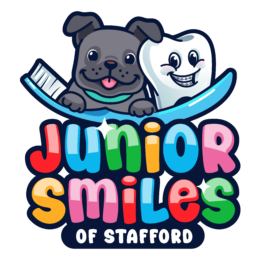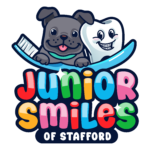What You Need to Know about Kids’ Retainers

For the majority of teenagers and adults, wearing retainers to bed and in between meals is beneficial for the first few months as the supporting tissue regains its strength after orthodontic treatment. Additionally, many younger patients who have gone through years of wearing braces may find that their teeth are regressing as a result of poor retainer usage, which is a common occurrence.
The use of retainers is not restricted to adults only. Kids can also benefit from wearing retainers, provided that they have first sought the advice of a reputable pediatric dentist.
What is a Kids’ Retainer?
A retainer is an oral device made to suit the individual patient’s teeth and is used to maintain the corrected position and alignment of the teeth after orthodontic treatment. They are composed of plastic or metal, and they can be either permanently attached or removable.
If the condition is not too severe, simple bite difficulties can be corrected using retainers instead of orthodontic treatment. In other cases, they can be utilized alone if the bite problem is minimal and reasonably simple to correct, such as slight crowding of one or two front teeth.
If a retainer is used after orthodontic treatment, its purpose is to guarantee that the corrected bite and tooth position do not relapse or return to their pretreatment states.
Reasons For Kids Retainers
Braces can give you a lovely smile, but you’ll need to wear a retainer to keep it looking that way.
Following an Orthodontic Treatment
Retainers for children are typically utilized as a final stage in the orthodontic treatment process. After braces have been removed, teeth might drift back toward their natural positions without retainers, which are used to keep the position of previously straightened teeth.
Helps address Oral Health Issues
In addition to shifting teeth, retainers can help with a variety of other oral health issues. They are sometimes employed to assist in the treatment of medical conditions. For example, you could be subjected to a tongue push (a condition where your tongue sneaks through your teeth when you talk). Some retainers, referred to as crib or tongue cage retainers, are made out of little metal bars suspended from the roof of your mouth and dangle down.
These retainers prevent your tongue from moving forward and into the space between your teeth when you speak. Your tongue has been trained to move onto the roof of your mouth so it doesn’t go through your teeth. The amount of time that children must wear a tongue cage varies from child to child.
Assists in addressing TMD
Another application for retainers is to assist persons who suffer from temporomandibular joint disease (TMD). Malocclusion is a condition in which the teeth do not meet properly when the jaws are closed, and bruxism, which is the habit of grinding your teeth as you sleep, is a common cause of TMJ issues.
Grinding your teeth stretches the muscles and joints in your mouth and jaws, which can cause jaw pain and headaches in certain people. By keeping your mouth from closing entirely at night, retainers can help you avoid teeth grinding.
Types of Retainers for Kids
Removable Wire Retainers
Several types of retainers are available, but the removable Hawley retainer is by far the most popular. In addition to a wire guide that secures the retainer to the back teeth, removal wire retainers have an acrylic plate that rests on the roof of the mouth or inside the gums at the base of each tooth, in the case of lower retainers.
Wire retainers offer the advantage of being detachable, allowing them to be taken out for eating and cleaning, making dental hygiene more convenient and less time-consuming. When braces are removed, retainers are often worn 24 hours a day for the first few months after they are removed. The majority of people who wear wire retainers eventually reach the stage where they only wear the retainer at night.
Out of all the types of retainers, Hawley retainers are the quickest to adjust. Removable wire retainers can be adjusted to accommodate minor changes in tooth position without fabricating a whole new retainer.
There are a few issues to consider when using removable wire retainers. The fact that it is removable means that they are more likely to be misplaced or mistakenly thrown away. Excessive heat exposure might cause the acrylic baseplate of the retainer to stretch or become damaged. Additionally, the wire bow that runs across the front of the teeth provides an aesthetic effect that helps to keep the teeth in place when worn.
Vacuum Formed Retainers
Vacuum-formed retainers are clear plastic trays designed to fit over the teeth and keep them in their proper position throughout time. Because the trays are removable, they have advantages similar to those of removable wire retainers. They are easier to clean and can be removed so that they do not interfere with eating.
Following that, vacuum-formed retainers provide a number of further advantages. Because they are made of translucent plastic, they are virtually undetectable while worn (much like Invisalign). Patients who grind their teeth at night can benefit from vacuum-formed retainers, which can also be used as whitening trays following orthodontic treatment. After orthodontic treatment, patients who wish to bleach their teeth can benefit from vacuum-formed retainers, which completely cover the teeth.
Bonded Retainers
The teeth are bonded to the retainers, which are not removable without the help of an orthodontist. For the most part, bonded retainers are utilized on individuals whose teeth have experienced a significant amount of movement and modification. Bonded retainers are often placed on the backside of the teeth and are made up of a wire that functions as a passive stabilizer for the teeth while the teeth are being bonded.
Bonded retainers are typically only visible on the patient’s front teeth, making them the least noticeable type of retainer. Fixtures are a fantastic option for people who require long-term or permanent retainer maintenance due to the fact that they are hidden from view and glued in place.
Because they are in your mouth 24 hours a day, bonded retainers effectively keep your teeth straight. As a result, they prevent some of the frequent issues associated with removable retainers, such as the possibility of their being lost or mistakenly thrown away. Because they produce difficult-to-reach places on the teeth, bonded retainers, like wire braces, must be cleaned with extra care.
Getting Fitted for and Wearing a Retainer
This is the most straightforward phase to complete.
You will be fitted for your retainer by an orthodontist, who will use a material known as alginate. When you dig your teeth into it, it turns into a chewy, chalky kind of viscous liquid that forms a mold of your teeth. The process of getting fit is quick, easy, and doesn’t even taste horrible; you can even choose from a variety of different flavors.
Your finished retainer can be customized to reflect your style and preferences. A picture of Spiderman, Christmas trees, or Halloween bats can sometimes be found on the plastic part of the retainer and other images. It is normally necessary to wait less than a week after being fitted for a retainer before you may acquire the actual appliance.
At first, the retainer may feel uncomfortable. That is very natural. However, if the retainer causes pain, cuts, or rubs against your gums, you should see your orthodontist for an adjustment.
Your child will have to get used to speaking with it in your mouth because it’s uncomfortable. Slowing down speech at the start is a fantastic approach to practice, and ultimately you won’t even recognize that you’re doing it.
Dentists recommend that the patient should read aloud for a few minutes every day for several minutes. During the first few days of wearing the new retainer, you may also notice an increase in saliva flow (i.e., more spit in the mouth), which is completely normal.
Caring for Your Kids’ Retainer
Young children may require assistance flossing around the retainer. With a little practice and the use of a floss threader, this may be accomplished. The area between the teeth as well as around the fixed retainer must be thoroughly cleaned. Visiting your dentist for frequent check-ups should continue to be a regular part of your routine.
Even while your child can break the fixed retainer wire, your child may be more prone to harming the removable retainer. That can happen if they leave it in a hot car or mistakenly put it in the washing machine because they forgot to take it out of their pocket. This is why orthodontists encourage children to always store their removable retainers in their case while they are not in use.
On the other hand, permanent retainers are a no-fuss, patient-friendly alternative that parents appreciate for their children. These retainers are not susceptible to being left in a napkin at lunch or melting on the sidelines. At the same time, your child participates in sports other than the regular brushing and flossing regimen. Furthermore, studies have shown that when your child wears a permanent retainer after braces, they have a higher success percentage in maintaining their beautiful straight teeth.
Choosing The Best Dentist For Your Kids’ Retainers
Dr. Azar and the rest of the team at Junior Smiles Of Stafford are pediatric dental professionals. We are here to answer any questions you may have about children’s dental checks, pediatric dentistry, children’s dentistry, or children’s dentists in Stafford, VA, and the surrounding areas. Contact Junior Smiles Of Stafford to schedule a free consultation today. Call now (540) 699-2441.
Read Next: Types of Pediatric Braces

